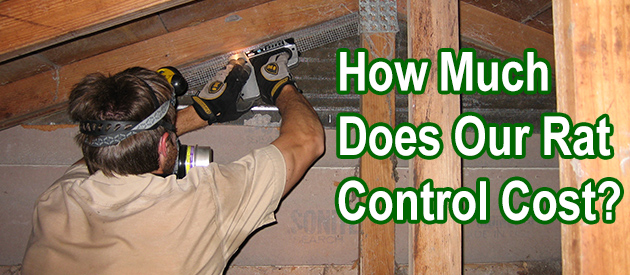Guilford County, Greensboro Rat Control Situation:
I am having a problem with Nordic Rats in my chicken coop. Over the last year, I have caught 7 skunks (live trap), 1 possum (live trap), 10 rats (1 in live trap, and 9 in rat traps), 4 robins and one chicken (my own dumb animal). The rats are getting into the coop and eating the chicken food. So at night I cover the food box and turn on the night camera. A photo of last nights problem and a previous one are attached. I have many photos of them, even sequential ones of them digging a tunnel into the coop. What you see in the photo are two sticky pads (total 11" wide) with him (12" body) in front of the hole he made into the chicken coop at the corner. I have put gopher gassers in the holes twice, but unsure how successful I have been. They have dug tunnels all around and under the completely wired coop. They even have chewed through the wire. I have concreted in many of the tunnels, but they dig around them. I set 9 rat traps at night, with apple and peanut butter. Usually they ignore them for the first night or two, then they all get set off, sometimes I get lucky and get one, but usually, they are just sprung. The apple is tied on and the peanut butter is under the flapper. I am almost at my wits end on how to eliminate them. I have tried one exterminator and told him to pack it up after a month of absolutely nothing. They filled his traps with soil from their excavation. They have even filled my live trap with soil during their excavation. So I am looking for someone that is ready to meet the challenge and help me solve the problem.
Greensboro Rat Control Tip of The Week
Why Don't Repellents Work Well To Get A Rat Out Of The Attic?
The urgent need for people to get rid of rats in their attic has made many consider humane removal methods apart from trapping and killing, one of which is the use of repellents. But here is the question! Do repellents work in getting rats out of attics?
The main idea of a repellent is to make the environment unsuitable for rats. This is achieved by using several techniques such as, scents and sound emissions. Although there is a wide range of repellents to choose from, the fact is that the use of repellents might not give you the kind of result that you desire in the long run. It might help keep them away for a while, but when the effects of the repellents subside, they will come back.
Let's take a look at some supposed effective rat repellents and how they were designed to work. With this, you will have a clear picture of the result you might get when you choose to use repellents to get rid of the rats in your attic.
Scent repellents are one of the most common repellents that are readily available in stores. This repellent is designed to use intense scent to either irritate or nauseate the rats. When used the first time, this might help repel the rats as intended. But with time, these rats will get used to this scent and will tend to stay until they get accustomed to it.
Another commonly used rat repellent is mechanical repellents. Apart from being ineffective, they are also very expensive. These repellents are designed to use sound and light waves to repel rats in the attic. This will also not give the desired results simply because rats are intelligent animals and will figure out that the mechanism can't cause any harm to them.
Having realized this, the best thing you can do to repel rats in your attic is by making it less appealing to them. This can be done by cleaning out the trash and making sure there are no hiding places for the rats.


